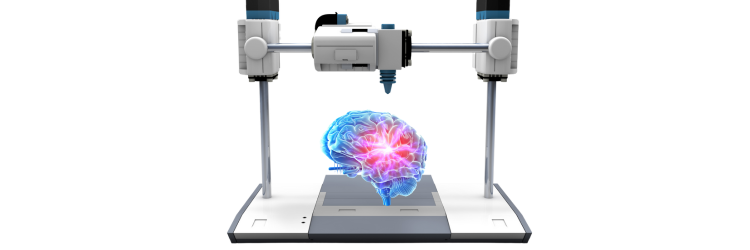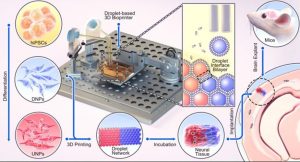Can 3D Printing Repair Brain Injuries?
Researchers at the University of Oxford may provide the mechanism to repair brain injuries, demonstrating that neural cells can be 3D printed to mimic the architecture of the cerebral cortex. The results are published today in the journal Nature Communications.
Brain injuries often result in significant damage to the cerebral cortex, leading to cognition, movement, and communication challenges. Annually, approximately 70 million people globally suffer from traumatic brain injury (TBI). If the damage is severe, there is no effective treatment, leading to serious impacts on quality of life.
Tissue regenerative therapies could be an answer. Until now, however, there was no method to implant stem cells that mimic the brain’s architecture.
The researchers fabricated a two-layered brain tissue by 3D printing human neural stem cells. Implanted into mouse brain slices, the cells showed convincing structural and functional integration with the host tissue. The cortical structure was made from human induced pluripotent stem cells (hiPSCs), with the potential to produce the cell types found in human tissues.
The hiPSCs were differentiated into neural progenitor cells for two different layers of the cerebral cortex, using specific combinations of growth factors and chemicals. The cells were suspended in solution to generate two ‘bioinks’ and printed to produce a two-layered structure. The printed tissues maintained their layered cellular architecture for weeks.
In mouse brain slices, tissue showed strong integration, demonstrated by the projection of neural processes and the migration of neurons across the implant-host boundary. The implanted cells also showed signaling activity, indicating that the human and mouse cells communicated.
The researchers now intend to refine the droplet printing technique further to create complex multi-layered cerebral cortex tissues that more realistically mimic the human brain’s architecture. Besides their potential for repairing brain injuries, these engineered tissues might be used in drug evaluation, studies of brain development, and to improve our understanding of the basis of cognition.
The new advance builds on the team’s decade-long track record in inventing and patenting 3D printing technologies for synthetic tissues and cultured cells.


